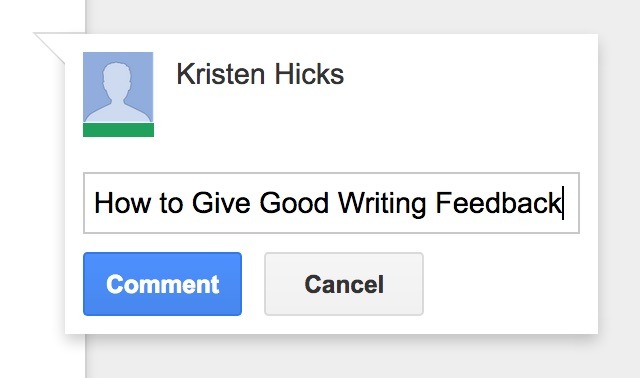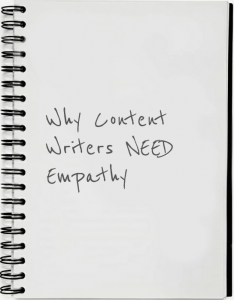
When a company embarks on a content marketing program, they often don’t realize just how hard creating great content is. Writing is a high-energy activity. It takes a lot of time, thought, and effort.
Research bears this out:
- Orbit Media’s blogger survey has found the average blog post takes 3.5 hours to write.
- Yet research into modern work habits has found the average knowledge worker is only productive 3 hours a day. The specific number of good writing hours you can get in a day will vary for different people, but there’s a hard limit for everybody (and I’d be genuinely shocked to meet someone who can do 8).
- HubSpot research reveals a clear relationship between blogging frequency and getting results. More blog posts = more website traffic.
So, if you need to write a lot of blog posts, each post takes over 3 hours, and you only get around 3 good writing hours in a day for each content creator on your team—well, I’m a writer not a math person, so let’s just say it probably doesn’t add up well for most businesses.
Content Writing Burnout is a Serious Problem
Burnout isn’t just about feeling tired, it’s a genuine health issue. If you overwork yourself for too long, it can lead to an array of health problems in the long term. But if protecting your health isn’t enough incentive, burnout will also hurt your work product. Good writing requires creativity and energy. Someone trying to crank out words while exhausted doesn’t have much of either to work with.
Avoiding content writing burnout is important both your team’s general well being, and to continue creating valuable content that gets results.
How to Protect Yourself from Content Writing Burnout
There are no shortcuts in content marketing. To get results, you have to put in the work. So how can you do that without burning out? Mostly by working smarter, rather than harder.
1. Be strategic.
A strategy doesn’t just help you do better content marketing, it also helps you figure out your priorities. Someone who tries to do everything will burn out faster than someone who thinks carefully about which tactics and topics to tackle to get the best results.
Take time to learn who your audience is, what they care about, and how they learn about and consume content online. You’ll still want to do testing to see what works best, and be willing to change up the strategy you create based on the results you get. But being strategic will help you cut down on the total amount of work you do, since you’ll know where to focus your energies for the best results.
2. Keep your goals realistic.
A lot of people don’t realize how much work creating content is until they start trying to do it regularly. Setting goals that require more writing than your team is capable of is a sure recipe for disappointment and burnout.
If the most you can reasonably create is one blog post a week and an ebook every other month, then don’t aim for two posts a day and an ebook every week. Make sure you give yourself and your team the time you need to do quality work, it’s not good for anyone if you put out rushed, sloppy pieces.
Create a content marketing calendar that helps you plan out realistic timelines for all your content pieces, and keeps you consistent in getting great content out there.
3. Keep a swipe file.
Content marketing requires creating new, original content on an ongoing basis. At some point, you’re going to hit up against the challenge of figuring out what to write about. Having a strategy will help with that, since researching keywords, competitors, and your audience usually leads to healthy list of topic ideas.
But you don’t want to reach a day where you run through the list and get to the end. To avoid that fate, keep a swipe file. This is a folder or document where you save other good ideas you see around the web. Any time you’re doing research, browsing the web, shopping, or just going about your life and you see something you like, save it. Over time, you’ll have a file full of links, screen shots, and hastily scribbled notes you can turn to for inspiration.
When it’s time to fill in your content marketing calendar with new ideas, your swipe file will keep them flowing.
4. Create outlines before writing.
Staring at a blank page is a notoriously frustrating experience for writers.
You know what’s easier than starting to write from scratch? Creating an outline. Then you’re not faced with a blank page when writing time comes, you already have your structure and basic ideas in place.
Creating an outline not only makes content writing easier, it also makes the end result stronger. It forces you to do research and organize your thoughts before you start putting words on the page. Organization at the front end produces a piece that will be more intuitive and readable on the user end.
5. Figure out your best process.
Writing productivity isn’t one size fits all. Each content writer will have to figure out for themselves what process most efficiently leads to good work. Analyze your working style carefully and try out a few different ways of approaching the creative process to see what works best for you.
Some techniques worth trying are:
- The Pomodoro Technique
- Batching your blog posts or outlines (i.e. doing a bunch all at once)
- Identifying your most productive time of day and scheduling all your writing work within that time
- Creating mini-milestones to work toward to keep a big project moving
Track your time as you try out different techniques and see which ones lead to getting more writing done in less time.
6. Take breaks.
When you’re overwhelmed and looking at a to-do list for the day that’s still far too long, taking a break feels like the last thing you should do. But breaks aren’t something to feel guilty about. They’re a necessary part of the creative process. And more than that, they’re proven to improve productivity.
Taking more breaks can mean getting more writing done.
If you’re not intentional about breaks, your brain will probably force them on you. Ever find yourself scrolling Facebook when you’re stressed out and have a million other things you should be doing?
Instead, schedule breaks into your day intentionally, and find ways to use them that help energize you. For me, an exercise break inevitably translates into more productivity in the hours afterward. For you, a nap or a few minutes of meditation may do the same. This is one of those things to test out when figuring out your best process.
7. Outsource.
No matter what hacks you use to get more content out of the time and energy you have available, you’re human and can only accomplish so much on your own. The most important step to avoid content writing burnout is recognizing when your team is overwhelmed. At that point, you can either scale back (which will likely mean slowing down your results), or you can outsource.
An overworked, stressed out team is a good reason to hire a freelance content writer. Someone who specializes in content marketing writing will take some of the work off your to do list, and deliver work that helps you meet your goals.
Avoiding Burnout = Better Content
Don’t work your team to the point of exhaustion. You’re much better off expanding your team with a skilled, capable freelancer (or a few) who lighten the load.
If you’re ready to find the right freelancer for your needs, check out how I work and get in touch to see if we’re a fit.














